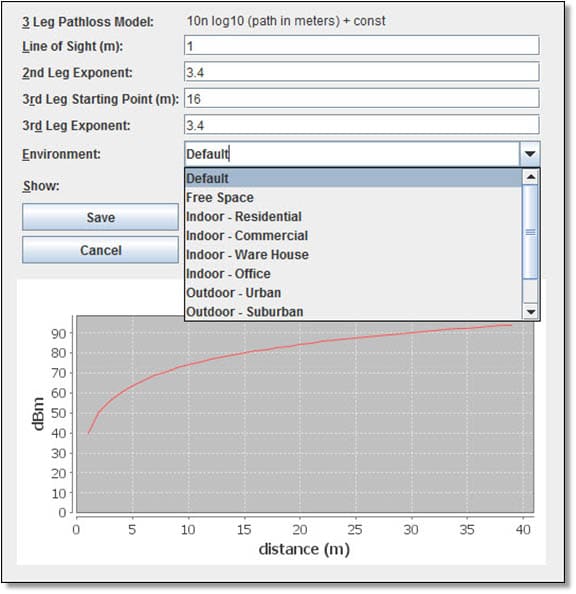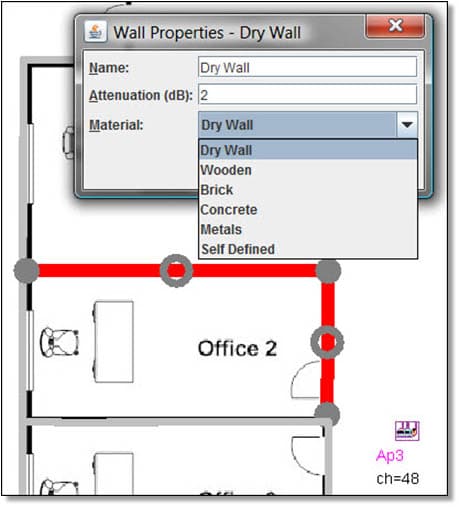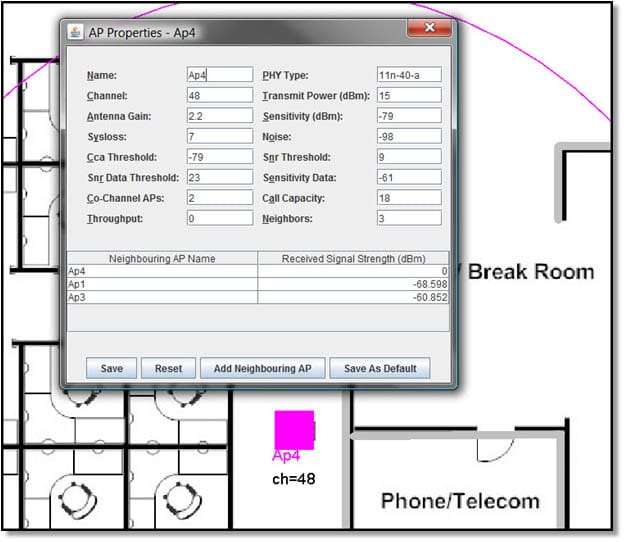WiTuners’ Rich Feature Set Makes WLAN Easier, Faster and Farther
“If software isn’t easy to use, you’re not going to use it.” That’s a lesson you’ve probably learned the hard way more than once. Worse yet, if your job requires that you perform efficiently, accurately, and at low overhead cost, you’d better make the right decision before committing to any one software product, no matter how feature rich it purports to be.
Looking at various means of going about deploying, auditing, optimizing, and automatically tuning large (and small) WLAN systems out of a wide variety of network deployment and management tools, WiTuners stands out for many of its unique features including:
- Easy deployment planning and comprehensive characterization of the WLAN
- True performance based optimization
- Automated, real time, hands-off adaptive tuning of the network
- Automatic verification to preclude degradation to the WLAN
Let’s take a look and examine how WiTuners provides all of these valuable strategic features in a user friendly fashion.
Reality to Achieve the Desired WLAN Operational and Optimization Results
We’ve been stressing the importance of fidelity to a real world WLAN. And we’ve made the case that a 3D or multi-floor representation is necessary. How can you make sure that what you define in the layout is close enough to reality to achieve the desired WLAN operational and optimization results?
WiTuners uses a philosophy of progressive fidelity:
- Define the deployment area and you get a generic layout (coverage)
- Define the environment and hence propagation is considered (office, warehouse, …)
- Define the walls and the losses are better characterized (drywall, concrete, …)
- Define the AP equipment and the protocol fidelity improves (802.11b/g/a/n …)
- Define the antennas and coverage can be fine-tuned (3D patterns, gains)
- Define specific customizable parameters and the WLAN representation is closer yet
You can start at the top of the list and you have a generic deployment plan. In fact, for some areas (like outdoors) it would work quite well asis. Progress down the list and the deployment plan (as well as the result) gets better and better.
Going through this procedure is straightforward. In fact, WiTuners provides a network planning wizard that leads you through it step by step. Loading a floor plan, setting scale, defining deployment area, AP properties, and propagation environment are all handled by the wizard. And the resultant deployment is ready to be customized.
Select the environment and AP to AP propagation effects are captured. A default is chosen if you do nothing. This is what happens for each step in the design process, and the default has been selected by WiTuners to be representative of the most common WLAN operating environment. But, if you wish to choose a specific type of operational area you can pick from a list of common buildings. Finally, if you know the specific path loss parameters to use (don’t worry, few people bother to learn this much) you can enter them explicitly.
A similar methodology applies to walls and partitions. Simple drag and drop procedures are followed to match walls atop your floorplan. They are easily moved, stretched, and slanted.
As you place walls, preselected loss characteristics are available to be chosen (drywall, wood, brick, concrete, metals). If you want to add a user defined value, you’re free to do so. But you don’t need to know the vagaries of propagation to develop a reasonably complex (and accurate) representation of your WLAN propagation environment. Just use the preselected or default values.
Special materials, such as tall metal cabinets or screens, can also be characterized by using metal or wood walls in their stead.
Last but not least are the characteristics of the APs themselves. Nothing in WLAN is more arcane than the parameter definitions for 802.11. Fortunately, WiTuners takes care of all of it for you.
First, the type of service that you’re looking for might require a particular standard (b/a/g/n). Or, existing availability of hardware may force this decision upon you.
In any case, WiTuners sets the AP properties (and can optimize them as well). You are, of course, free to customize their values if you wish (and we hope you know what you’re doing). The settings will be suitable for both the traffic and interference environment that is encountered. And if automatic tuning of the network is used, they will change on the fly to provide you with an optimized WLAN.
In addition to the AP properties that were shown, 3D directional antenna patterns can be used with WiTuners. This is a unique capability that is provided in order to help make the WLAN software the most realistic and functional available. By providing 3D antenna patterns, the AP characteristics are fully integrated into the 3D deployment capabilities of WiTuners.
These 3D antenna patterns are able to take into account not only 2D coverage but also back-lobe interference from above and below the AP. Omnis, patches, and high gain antennas can be selected from a predefined list. The user is also free to input a custom coverage pattern. Picking from such a list of available antennas, placing them on the deployment map, and pointing them in desired directions, the user can fully customize and optimize the traffic to cover hotspots and awkward topologies.









Leave a Reply
Want to join the discussion?Feel free to contribute!